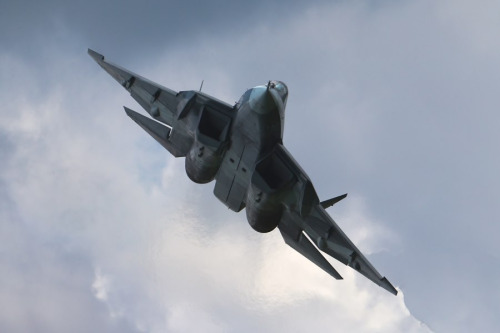After Sukhoi
'mistake', India to go for Russian 5th-generation fighter only on full-tech
transfer pact
Rajat Pandit
| TNN | Updated: Mar 9, 2017, 05.24 AM IST
HIGHLIGHTS
- India will ink final R&D
contract for the FGFA with Russia only if there is full-scale transfer of
technology.
- Decision has been taken in order
to "not repeat the mistakes" of the entire Sukhoi-30MKI jet
acquisition programme.
- IAF has been unhappy with Sukhoi because the jet lacks proper stealth.
NEW DELHI:
India will go in for the multi-billion dollar joint development and production
of a fifth-generation
fighter aircraft (FGFA) with Russia only if there is full-scale transfer of technology as well as
"benefits" for the indigenous effort to build a futuristic stealth
fighter.
Defence ministry sources say this decision has been taken at the "highest levels" in order to "not repeat the mistakes" of the entire Sukhoi-30MKI jet acquisition programme from Russia, which cost India Rs 55,717 crore without any tangible help in developing indigenous fighter-manufacturing capabilities.
"Though bulk of the 272 Sukhois (240 inducted till now) contracted from Russia have been made by Hindustan Aeronautics (HAL), they have been basically assembled here with imported knocked-down kits. HAL still cannot manufacture the Sukhois on its own," said a source. A HAL-made Sukhoi (around Rs 450 crore) also costs Rs 100 crore more than the price of the same jet imported from Russia.
So, despite Russian pressure to ink the long-pending final R&D contract for the FGFA, India now wants to know whether it will get good value for the estimated $25 billion it will spend to induct 127 of these single-seat jets. The two countries, incidentally, had inked the FGFA inter-governmental agreement way back in 2007, which was followed by a $295 million preliminary design contract in 2010 before the negotiations stalled.
India has now laid down two essential prerequisites for the FGFA project, apart from examining its entire cost-effectiveness. One, there should be extensive technology transfer, including the "source codes", to ensure India can in the future upgrade the fighter with integration of new weapons on its own. Two, it should directly help the indigenous FGFA project called the advanced medium combat aircraft (AMCA), the preliminary design work for which is now under way, as was earlier reported by TOI.
"This is mandatory. A high-level committee headed by an Air Marshal from IAF, which includes an IIT Kanpur professor and former chiefs of HAL and National Aerospace Laboratories, is examining all these aspects. The government will take a call after the report is submitted in April," said the source. A swing-role FGFA basically combines advanced stealth, supercruise capability (achieving supersonic cruise speeds without use of afterburners), super-maneuverability, data fusion and multi-sensor integration on a single fighter.
But IAF has been unhappy with the Russian FGFA called Sukhoi T-50 or PAK-FA because the jet lacks proper stealth and its engine does not have "enough thrust", which are among 43 critical modifications or shortcomings it pointed out earlier.
Russia,
however, is now promising the Indian FGFA or the "perspective multi-role
fighter" will be quite different from the Sukhoi T-50, with more powerful
engines and other capabilities. Under the main R&D contract, India and
Russia are supposed to contribute $4 billion each for prototype development,
testing and infrastructure build-up.Deliveries of the fighters, which will cost
extra, were earlier supposed to begin 94 months after it was inked.
Original
post: timesofindia.indiatimes.com
Related post:
Sukhoi Pak Fa
T-50 (Su-50): Details


No comments:
Post a Comment